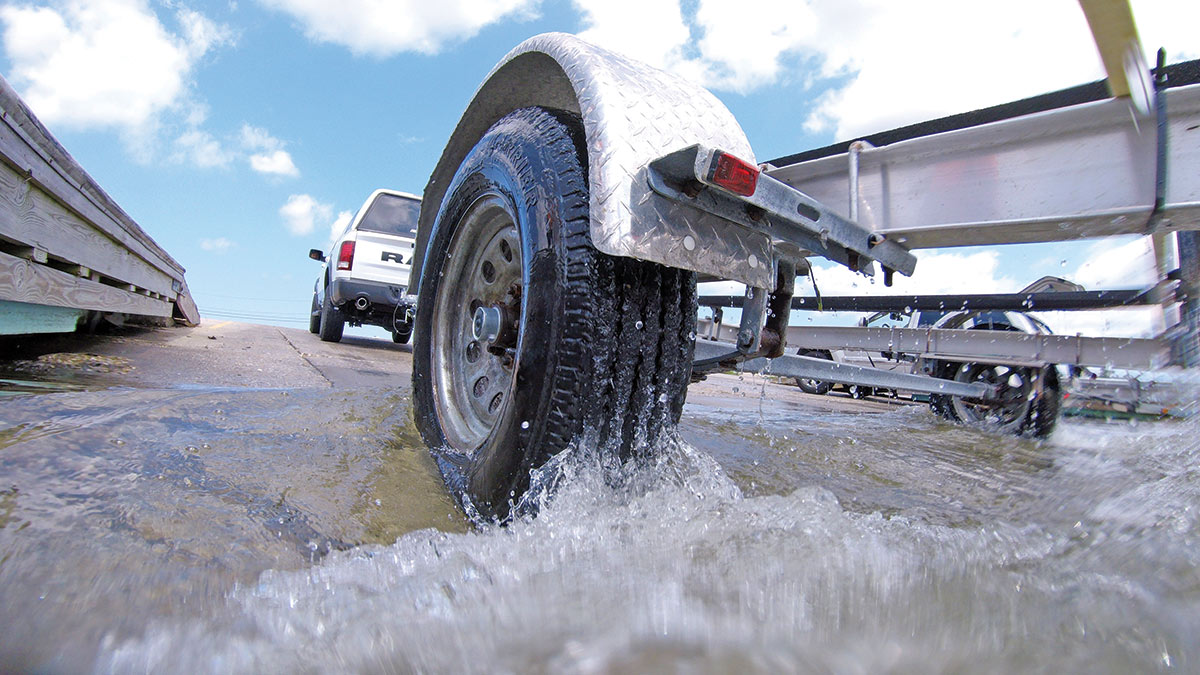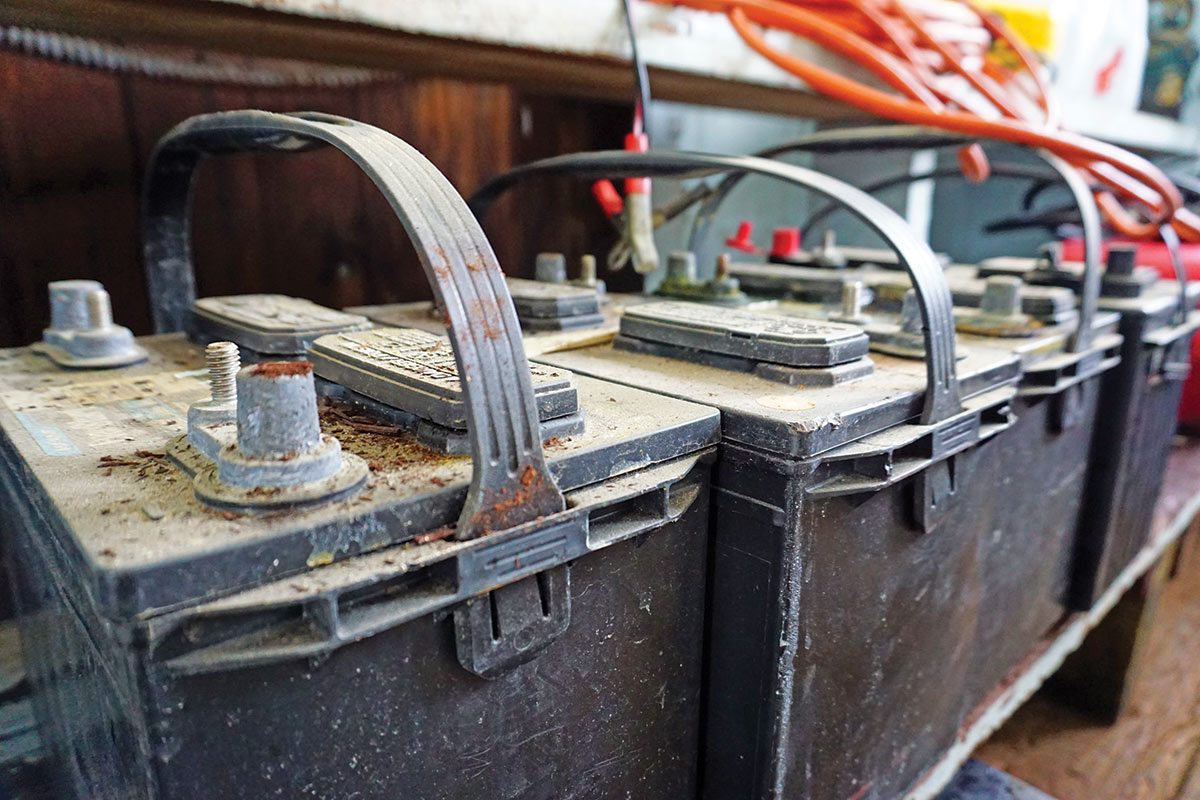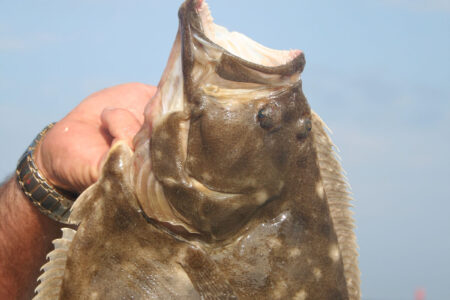
You’re high and dry – you can sink or fish for stripers on the next warm day. In theory the happy wife now makes a happy life. Time to shift gears from one money pit to another – your house.
But before we leave our seasonal fun behind we have to think about two things. One, she must ride through the worst of winter and the next six months fine; so what can you do to make that painless (aka nothing breaks or gets ruined)? Second is correcting neglected items and improving her a little. Namely what does your boat need workwise that you have put off all season long?
Let’s face it, we’d rather be fishing than fixing. But these are two things to keep in mind when putting her to bed for the five- to six-month hibernation.
Now is also the time to dream up new ideas to make her even better in 2019. You don’t want your boat to become Clark Griswold’s ridiculously modified Ford “Truckster” going to Wally World with ridiculous attachments and gadgets everywhere. Seriously, even the best underwater lighting will not slow Christy Brinkley’s Ferrari for a second look.
A friend has a 31-foot Rampage, a great canyon boat for fishing. It has a transom door for dragging aboard big fish, but not a lot of room for overall storage. Don’t get me wrong adding gadgets like a gas AC generator, underwater lighting, CHIRP fishfinders, wireless autopilots, FLIR are all nice additions, but the cockpit obstacle course of three 200-quart coolers is a nightmare. There’s got to be a better way. This is the time to get creative, to talk with other folks about how they’ve configured their own boats and make notes for winter projects.

But first things first, and that’s putting her away this year.
Stabilize It. Historically we’ve all heard about the “bad gas” problems. And we have heard positive things about stabilized fuel additive like Stabil made for petro-alcohol fuels. I’ve had things like snow throwers with 2-year-old stabilized fuel work just fine. This takes some planning since the stabilized fuel is ideally in the fuel lines and inside the engine and not just in the tank. In the closing days of the season, you should be running the stabilized fuels through your engine to ensure it is in the whole system including the engine as well as the fuel tank.
Full or As Is? There are two schools of thought in terms of what to do with the fuel currently in your boat’s tank. First is to fill tank to not allow room for condensation, which in turn has you starting next year off with one or two hundred gallons of six-month-old fuel. Alternatively you could also leave stabilized fuel in the tank as low as possible to not create next year’s first problem. If you’re having the boat pulled by a pro and stored at the marina, check their preference.
Marine Sanitation Device. Water will freeze, expand and likely destroy whatever it’s inside of, and that includes your boat’s toilet. Drain it. You can always add antifreeze to make sure that the concealed water and dump lines can’t freeze.
Silicone Spray All. Love this stuff. I have an 8-year-old outboard used exclusively in saltwater that looks brand new under its cowl. Anything metal should have this on it or worked into it like a door hinge or a hasp. If it’s not plastic or wood spray it all over.

Washdown & Power Wash. I found trailer shops who do snow plows and sell an additive you attach to your garden hose to get rid of salt. It works on the same way lawn chemicals are added. Wash the vessel top to bottom, then powerwash the bottom and all your decks.
Rain-X Windows. Add a bit of extra water resistance to keep those windows clear. Enter a harbor at night with salted up windows, and night stress is multiplied five times over. Ever see someone running the boat while hanging off to one side because their windows are useless? A little Rain-X does wonders; now I use a spray bottle of freshwater and a squeegee just for these night vision issues.
Apply & Not Remove Wax To Metal Rails/Fittings. Put wax on all those metal rails, let it dry to powdery state and leave it! Remove that powder in the spring. It’ll protect the metal and look brand new and shiny next spring’s launch.
Mold & Mildew Prevention. Remove all cloth, upholstery, canvas, rollup Isinglass panels take them home. Lube all snaps and zippers before putting them away. Don’t forget that refrigerator too. By the way, those Isinglass roll-up panels will seem to have shrunk during the winter when re-installed next spring. The opposite is true – the stretch they had goes back to normal size. When re-installing let the sun warm them up. The top of a black SUV works wonders for that re-found stretch.
Remove All Fishing Gear. Leave all doors and hatches open under the cover. Everything that opens, leave it open. Ventilation is your best friend. Steamy and warm next March the mildew and mold will do its best to find new homes. You took those buckets of Gulp out right?
Battery Storage. There are many ways of storing batteries, the most popular and perhaps easiest is to just pay your marina – and make sure you get the same batteries back. Hey, that’s not as crazy as it sounds; mistakes do happen! Make sure batteries are fully charged when taken from the boat. But remember that batteries can be boiled out if charged too much where literally all the acid in the cell is boiled out. If you’re storing at home, a method I’ve used for decades is placing batteries in my garage on top of a set of 2x4s. Then using a small automatic charger hooked up to an ordinary 24-hour timer, I run the charger on low power 15 minutes every day.

The winterized batteries should not be paralleled together like on your boat “all” selector switch. They should ideally be electrically isolated from each other with either an in-line diode to allow only incoming charge but not discharge into the sick battery tied to it. Or simply use multiple dedicated small 2-amp automatic chargers to each battery tied to a power strip run by a single 24-hour timer. The ticking timer gives away that it’s running, and the timer has a bypass to turn all on and see the 2-amp charger meters deflect showing it’s on. If one battery is constantly maxed out on charge something is wrong with that battery and it could be time to replace.
Remember too that your boat is a great place for Mother Nature to get out of the weather. Let the vents let the air in and out of your vessel. Its bow is up hill to drain your bilge out the transom drain plug. But remember an exit can always be an entrance. Block up that entrance with mesh or non-rusting “steel wool” to keep rodents/varmints outside your shrink wrap/tarp and out of their winter home in your cabin, bilge or exhaust system.
Of course, you don’t have to be a stranger. Ventilation vents and a zippered door in your shrink wrap give you the ability to pay the occasional visit at Christmas or early in the New Year. The zippered entry is a good check. It also gives you a reason to get out of the house to avoid cabin fever a bit this offseason.
| PRE-LAUNCH CHECK LIST |
|---|
| The seasonal list stays the same each year, but it’s good to keep one to maintain. For example, inspecting and replacing zincs, removing and greasing propeller spline, putting in new cotter pins every year, changing motor oil and filter and adding new fuel filters. All of these regular items, from bearings to seals and new water pumps, there’s a lot to go into laying her up for the winter and prepping her for a new season of action. |



